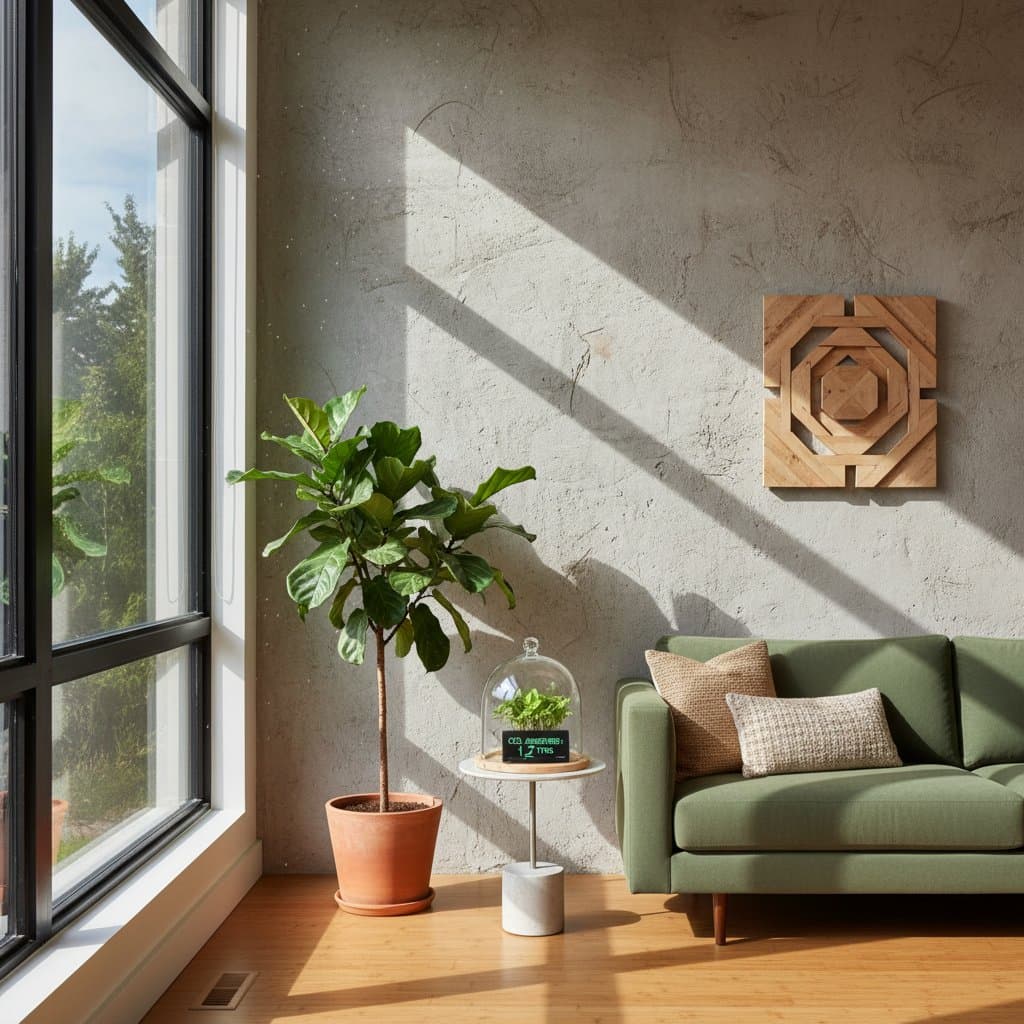Hempcrete Insulation Reduces Cooling Costs by Up to 50 Percent
Summer heat waves drive up energy demands and strain household budgets. Homeowners seek durable, eco-friendly ways to maintain comfortable indoor temperatures without excessive reliance on air conditioning. Hempcrete insulation stands out as a bio-based solution that sequesters carbon and delivers substantial reductions in cooling expenses.
This material, made from hemp hurds, lime, and water, forms walls that provide superior thermal performance. Builders and architects increasingly specify hempcrete for its ability to create energy-efficient structures. The result is lower utility bills and a reduced environmental footprint.
Essential Benefits
- Hempcrete lowers cooling bills by as much as 50 percent relative to standard insulation materials.
- It balances indoor humidity and temperature, minimizing the need for powered climate control.
- One cubic meter sequesters about 165 kilograms of carbon dioxide, supporting carbon-negative construction.
- Upfront costs align with mid-tier options, with savings accumulating over time.
- Application suits new constructions and renovations, accommodating diverse project needs.
How Hempcrete Achieves Energy Savings
Hempcrete's effectiveness stems from its thermal mass, phase change properties, and moisture management. These attributes form a resilient building envelope that dampens daily temperature variations.
Leveraging Thermal Mass for Steady Temperatures
Hempcrete possesses a higher specific heat capacity than fiberglass or foam alternatives. It soaks up daytime heat and releases it gradually overnight. In regions with warm days and mild nights, this mechanism cuts air conditioning use by up to 40 percent.
Research from sustainable architecture experts shows hempcrete walls hold interior temperatures steady within two degrees throughout the day. Conventional walls, by comparison, experience swings of six degrees or greater. Such consistency enhances occupant comfort and trims energy consumption.
Managing Moisture for Enhanced Comfort
High humidity amplifies the sensation of warmth by impairing the body's evaporative cooling. Hempcrete's breathable structure keeps indoor relative humidity at 45 to 60 percent, an ideal range for well-being.
The material absorbs excess moisture during humid periods and desorbs it in dry conditions. This natural buffering eases the burden on dehumidifiers and air conditioners, promoting a healthier indoor atmosphere.
Analyzing Costs and Investment Returns
Hempcrete's initial expense may exceed that of basic insulators, yet its enduring advantages justify the choice. Energy reductions and durability drive quick payback periods.
Breaking Down Upfront Expenses
| Component | Traditional Insulation | Hempcrete Insulation |
|---|---|---|
| Material Cost (per square meter) | $10–$15 | $15–$20 |
| Installation Labor | Moderate | Moderate |
| Maintenance | Low | Very Low |
| Estimated Lifespan | 25–30 years | 60+ years |
Energy savings often recoup the premium in five to seven years. Users typically see yearly reductions of 40 to 55 percent, influenced by local weather and home design.
Calculating Long-Term Value
Stable temperatures reduce stress on heating, ventilation, and air conditioning systems, prolonging their service life. Across two decades, lower energy use and upkeep costs can deliver returns surpassing 150 percent.
Certain local governments and sustainability initiatives provide rebates for carbon-capturing materials. These benefits, such as tax credits or funding assistance, strengthen the economic appeal of hempcrete projects.
Evidence from Actual Installations
Property owners praise hempcrete for elevating living conditions and air purity. In a documented retrofit of a 150-square-meter residence, peak indoor temperatures fell by eight degrees Celsius in summer versus a prior conventional build.
The supervising engineer noted, "We anticipated solid insulation, but the humidity regulation exceeded expectations. The air stays crisp, and the cooling unit operates far less during daylight hours."
Commercial applications extend to offices, educational facilities, and public venues. Professionals highlight hempcrete's contributions to sound control, climate consistency, and operational efficiency.
Advancements in Sustainable Insulation Materials
Hempcrete leads a shift toward renewable insulators like mycelium panels, straw bales, and recycled cellulose. These options prioritize energy conservation and carbon storage.
Decision-makers now emphasize full life-cycle assessments, evaluating impacts from sourcing to end-of-life. Hempcrete excels here, with fast-growing hemp and fully compostable byproducts.
Innovations include factory-made hemp-lime blocks, which streamline assembly and ensure uniform performance. Such developments position hempcrete for broader use in city infill projects and expansive builds.
Implementing Hempcrete in Your Project
Evaluate your location's weather patterns and structure when planning hempcrete use. In humid tropics, its moisture and heat handling yield clear advantages. Temperate areas benefit from year-round efficiency gains.
Practical Steps for Adoption
- Engage an architect versed in bio-materials to review your design and suggest suitable integrations.
- Procure verified hemp hurds and lime from trusted providers for reliable results.
- Commission simulations to project energy outcomes and validate savings projections.
- Allocate time for the mixture to set during building phases.
- Monitor usage post-completion to quantify actual performance improvements.
Training programs for installers are proliferating, alongside expanded material availability. Hempcrete combines user comfort, fiscal prudence, and ecological gains, establishing it as a cornerstone for resilient architecture.
For those aiming to curb energy costs and foster superior indoor spaces, hempcrete provides a reliable, forward-thinking option. Its capacity to slash cooling demands while embedding carbon underscores its role in sustainable progress.








